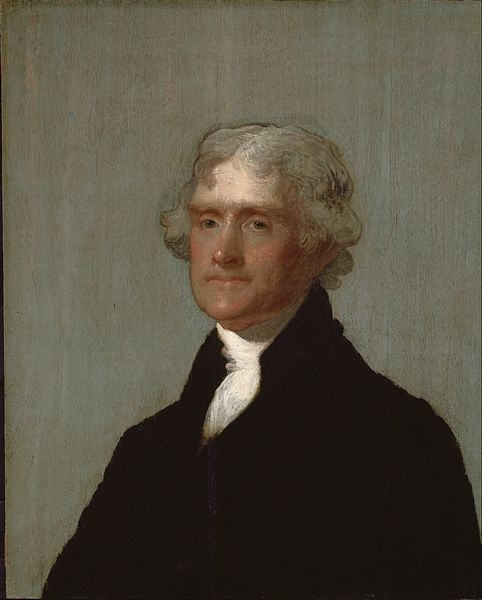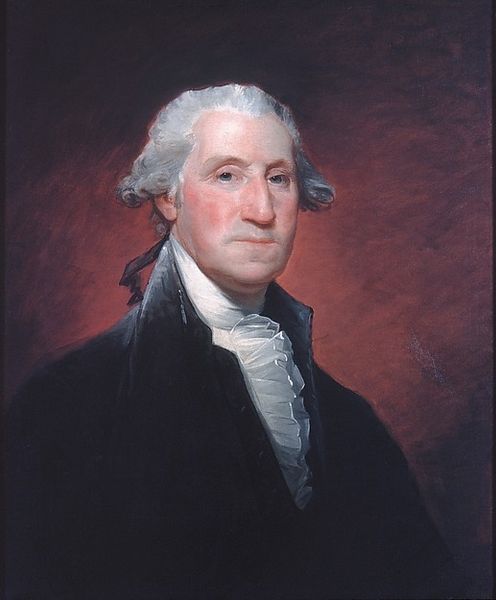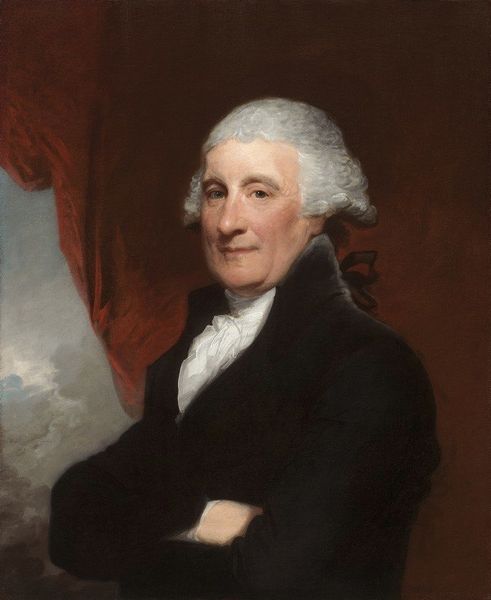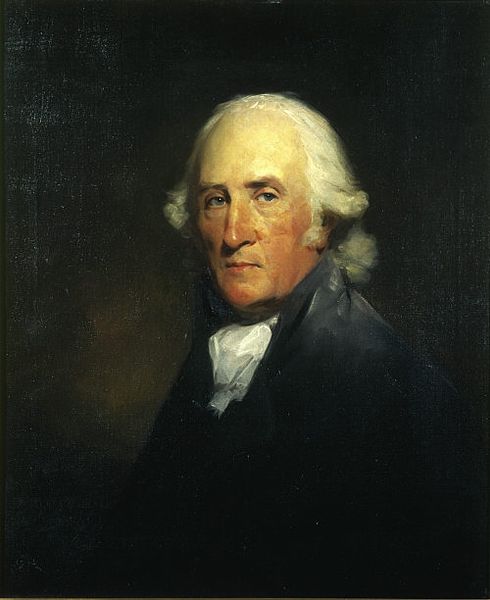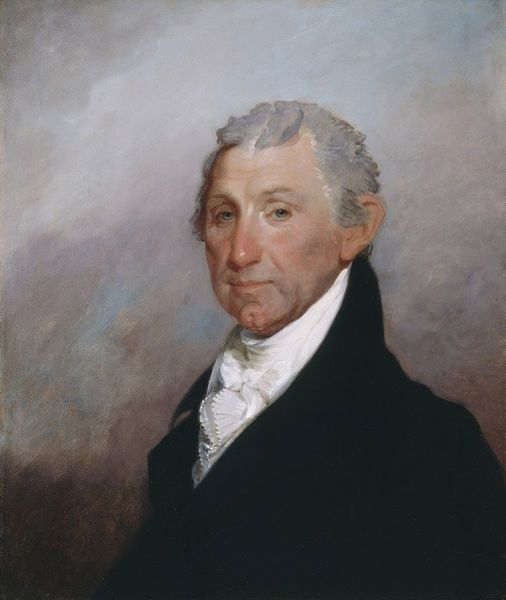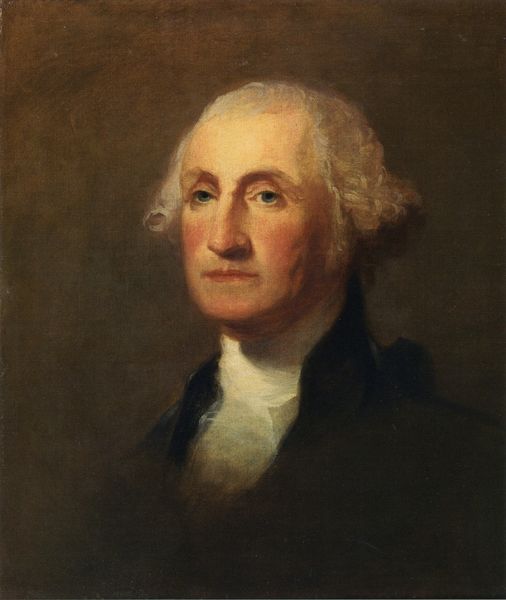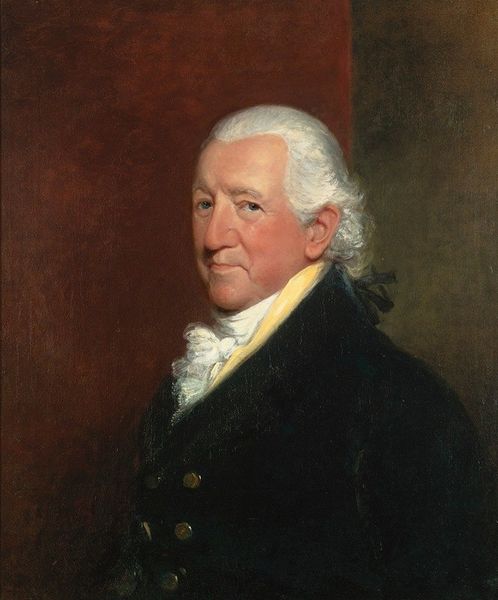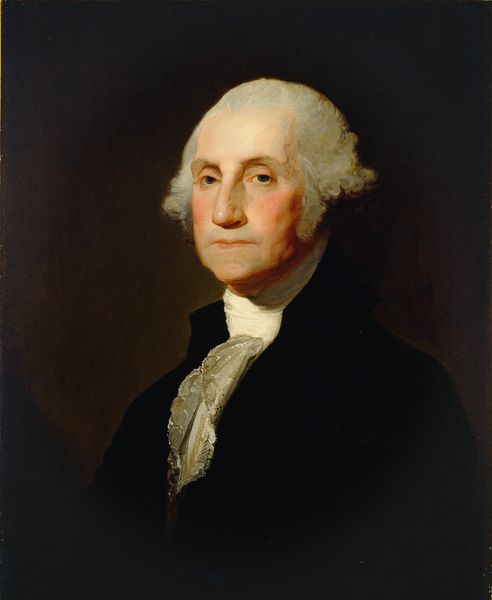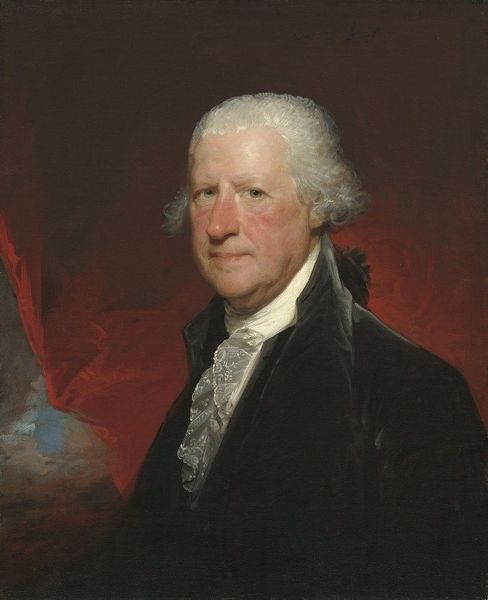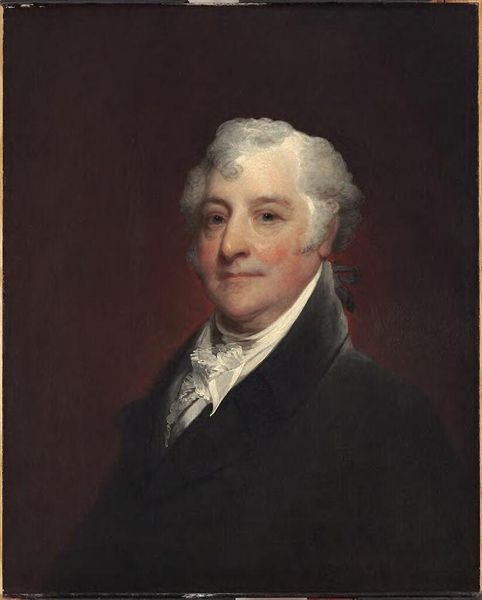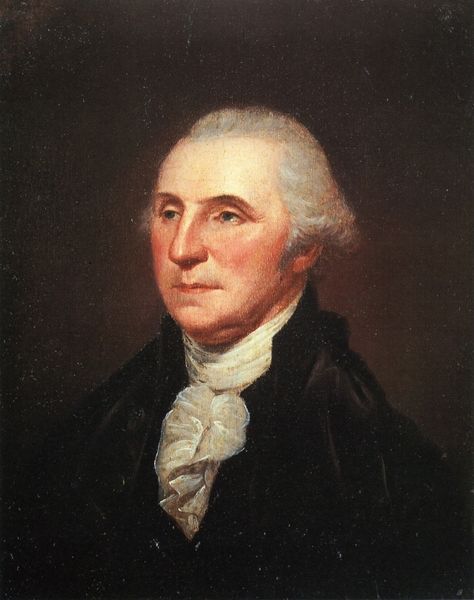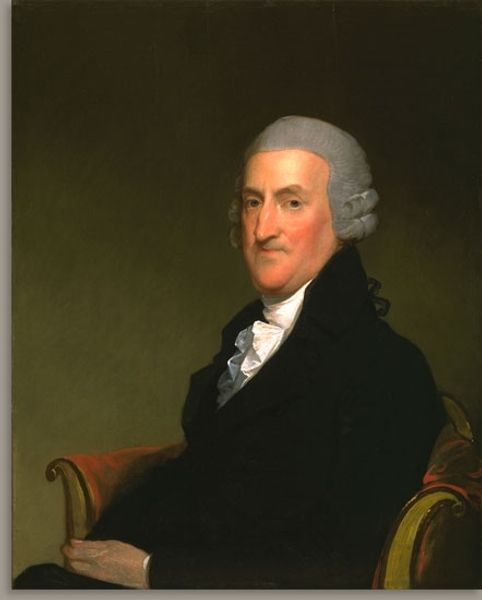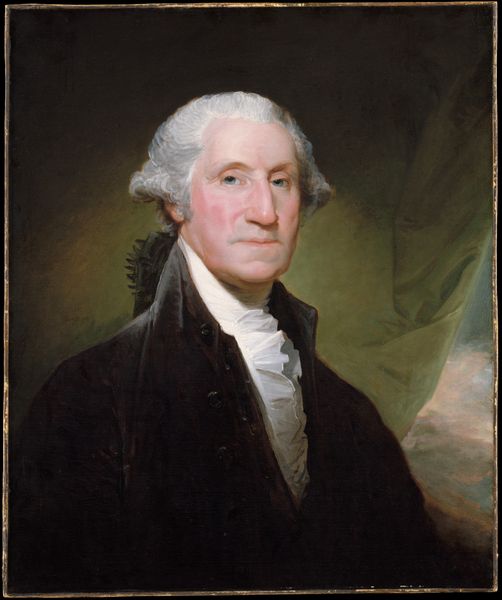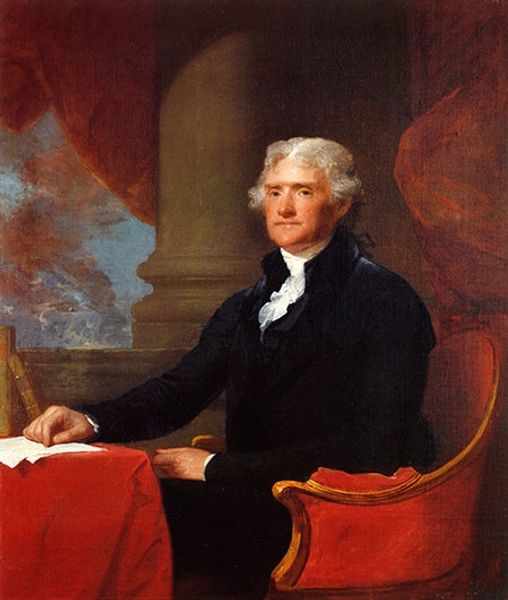
painting, oil-paint
#
portrait
#
neoclacissism
#
painting
#
oil-paint
#
classical-realism
#
history-painting
#
academic-art
Copyright: Public Domain: Artvee
Editor: So here we have Gilbert Stuart’s portrait of Thomas Jefferson, dating back to around 1821. It's an oil painting, and there's a formality and stateliness to it, wouldn't you agree? How do you approach a portrait like this? Curator: Given the context, I view this less as a straightforward depiction of an individual and more as the construction of an image – an *idea* of Jefferson intended for public consumption. We must ask, how does Stuart, and by extension, Jefferson himself, want to be seen and remembered? Editor: Interesting! It's clearly meant to convey something beyond just his likeness. What visual elements are working towards this "idea"? Curator: The Neoclassical style certainly contributes. Notice the restraint, the almost Roman gravitas, which visually aligns Jefferson with the ideals of republican virtue. Then consider the circumstances of its creation; Stuart made several portraits of Jefferson, and these were often reproduced and distributed. Who do you think had access to these images and what message were they intended to reinforce? Editor: It suggests a conscious effort to cultivate a certain image for posterity and project power or trustworthiness to those who viewed them. Sort of like state propaganda almost? Curator: Exactly. And while Stuart was undoubtedly a skilled artist, the political implications of these images cannot be ignored. Consider, whose stories get told and visually represented in such grand ways? Editor: That's given me a whole new way of looking at portraits! Thank you. Curator: It goes to show how art can solidify legacies but can also open conversations on more critical reflection about historical narratives and cultural impact.
Comments
No comments
Be the first to comment and join the conversation on the ultimate creative platform.
